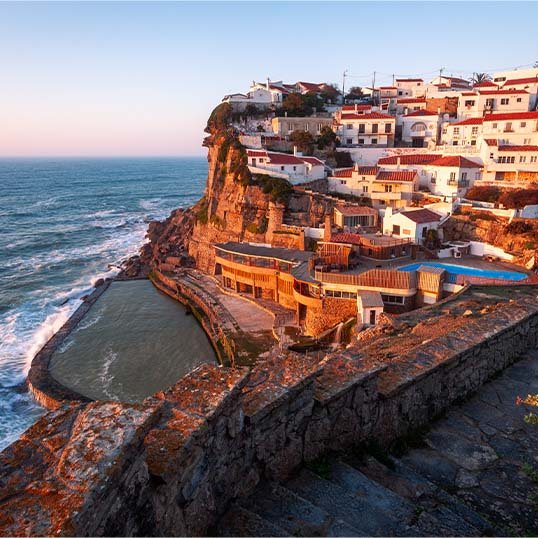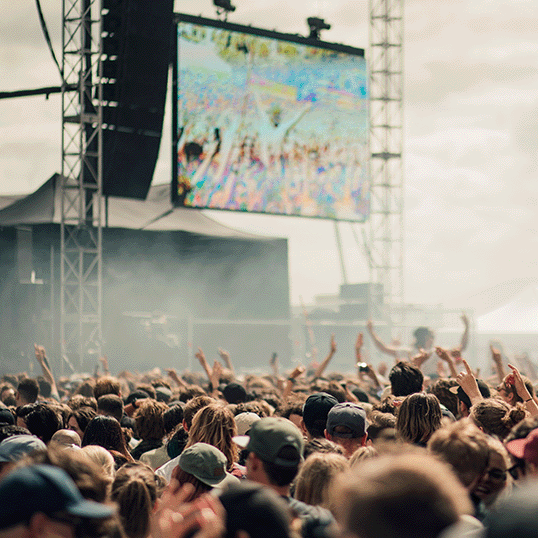Attractions
The squares of Lisbon that tell stories
Each street, each monument, each garden, each square, each corner of the city reveals a piece of its past, full of achievements and memories. The squares, in particular, reflect a culture and old customs that cannot be left untold to those who visit them.
Because getting to know Lisbon is also getting to know its squares and everything they represent, check out the ones that must be included on your "places to visit” list.
Commerce Square
It is considered the most important and large square in Lisbon, and one of the most beautiful in Europe, having a very privileged location: capital’s downtown, open to the south to the stunning Tejo River.
Historically, Praça do Comércio has represented much more than a simple place for strolling. Built purposefully in the same area where the Royal Palace was placed, it housed the landing pier for boats that usually arrived in Lisbon, carrying not only goods but also the travellers — especially Kings and Heads/Chiefs of State who visited the country.
Initially under the name Terreiro do Paço, after the 1755 earthquake that destroyed Lisbon’s downtown (the largest and most devastating earthquake so far), it was renamed Praça do Comércio — although many today still recognize it as Terreiro do Paço. This new name dates back to the time of Marquês de Pombal, to whom the credit is given for the idealization and orientation of the square’s reconstruction (and the surrounding areas ruined by the earthquake). It was also chosen to represent the merchants, the bourgeois class and those who, financially and with their hard work, contributed to rebuilding this entire space.
Some surrounding places of interest:
- Arco Triunfal da Rua Augusta
- Martinho da Arcada (coffee shop and restaurant)
- Cais das Colunas
- Dom José I statue
Note: The downtown buildings (or Baixa Pombalina), built under the responsibility of Marquês de Pombal, are one of the biggest tourist attractions of the capital.
Figueira Square
Also located downtown, but between Praça Martim Moniz and Praça do Rossio, stands Praça da Figueira. This place reveals a huge historical value: it was here that the largest hospital in the city was placed, the Hospital de Todos os Santos, built in the 15th century and also destroyed by the 1755 earthquake. After its reconstruction (once more, under the responsibility of Marquês de Pombal), this was the space chosen to construct the main market in Lisbon — which still exists, although remodelled and adapted to current needs.
Nowadays, although without the building where the hospital was housed, this continues to be a very lively place, especially due to the existing shops, hotels, restaurants and coffee shops (and respective terraces), as well as the movement and the excitement that are felt daily on the streets.
Some surrounding places of interest:
- Mercado da Figueira (market)
- Confeitaria Nacional (pastry shop)
- Dom João I statue
Rossio Square
Bordering the area of Baixa Pombalina to the north, Praça do Rossio, also known as Praça D. Pedro IV, is also one of the most important squares in Lisbon. If its large area already impresses anyone who passes by, the imposing Theater D. Maria II — erected in the place where Casa da Inquisição (Estaus Palace) was —, the majestic statue of Dom Pedro IV — King of Portugal as D. Pedro IV and the First Emperor of Brazil as Pedro I — and the two extraordinary fountains (one on each side of the statue) make it even more popular.
According to history, it was here that several events of that time took place, such as bullfights, military parades, autos-da-fé, political rallies, among others. It was also the place where many personalities from the bourgeois class used to stroll (two of the most famous coffee shops in the capital are still here).
This square did not resist the earthquake of 1755 as well, being reconstructed and requalified after the tragedy.
Some surrounding places of interest:
- Teatro Nacional D. Maria II (theatre)
- Café Nicola (coffee shop)
- Rossio train station
- D. Pedro IV statue
Luís de Camões Square
Praça Luís de Camões, or Largo de Camões, is a must stop for anyone who is visiting Lisbon. It has a golden location: it stands out between the distinguished Chiado and the bohemian Bairro Alto, right in the heart of the capital.
In the center, the statue of Luís Vaz de Camões imposes itself, honouring one of the most remarkable and inspiring poets in the History of Portugal. His greatest achievement, Lusíadas, reached, over the centuries, a universal dimension never seen before, and even today it is a mandatory presence in the Portuguese school education.
Alongside with the history that characterizes it, this square is also a very enjoyable space, and its beauty is undeniable, whether due to the existence of the statue itself and the stone benches that flank it, or also because of the Portuguese sidewalk that features drawings alluding to the sea and the Portuguese discoveries.
Praça Luís de Camões is also very popular for both tourists and locals, since it is the most crowded meeting point for those who enjoy the nightlife of Bairro Alto, and is also one of tram’s 28 stops.
Some surrounding places of interest:
- Bairro Alto (neighbourhood)
- Bairro Alto Hotel
- Chiado (neighbourhood)
Martim Moniz Square
Located near Praça do Rossio, in the Mouraria neighbourhood, it is said that the name of Praça Martim Moniz is a tribute to the soldier who, in 1147, risked his life to help D. Afonso Henriques (first King of Portugal) to conquer the city of Lisbon to the Moors — and in particular the monument that today is known as Castelo de São Jorge.
With a breathtaking view of the castle, this square is one of the most multicultural places in the city, given the number of ethnicities that cross it. It is also here the terminal of Lisbon's most iconic tram, the 28, a fact that makes it even more recognized.
Recently, Praça Martim Moniz was requalified and revitalized to attract even more tourists and locals. Several dining options (with flavours from different culinary cultures), street food spots, terraces, green areas, street entertainment, among others, is what you will find here.
Some surrounding places of interest:
- Bairro da Mouraria (neighbourhood)
- Castelo de São Jorge
Lisbon is a city of enchantments, full of history and stories, many represented in its wonderful squares. Come and meet them!


